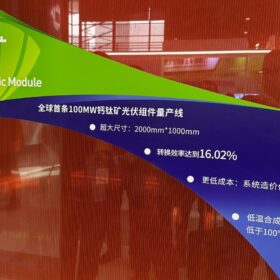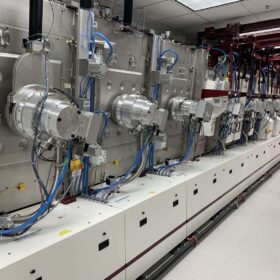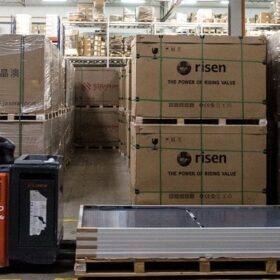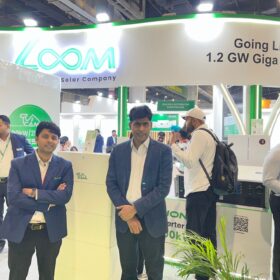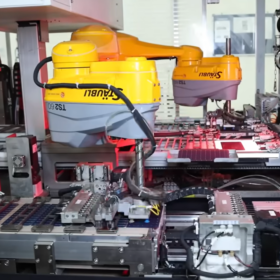AI-driven carbon management: The future of global corporate sustainability
The future of global sustainability hinges on clarity—where every tonne of carbon saved is measured, understood, and built upon. For corporations ready to lead, artificial intelligence (AI) isn’t a distant horizon; it’s the lens through which progress comes into focus.
GCL claims 19.04% efficiency for perovskite solar panel
The Chinese manufacturer was able to increase the panel efficiency from 18.04% to 19.04% in 16 months. The panel has a size of 2,005 mm x 1,005 mm x 35 mm and a weight of 34.5 kg.
Myanmar earthquake disrupts solar wafer production, global supply chain
The recent 7.7-magnitude earthquake in Myanmar has disrupted solar wafer production in western China, where about 50% of the country’s wafer capacity is concentrated. Major manufacturers have suspended operations due to equipment failures, raising concerns over supply shortages and higher global solar prices.
PVH launches foundation system for solar installations on complex terrain
PV Hardware (PVH) has released PVH Terra, a foundation system designed to improve solar plant installation on challenging terrain. The system aims to improve stability in expansive soils, frost-affected areas, and sites with poor geotechnical conditions while reducing costs and environmental impact.
Nigeria proposes ban on solar panel imports
The Nigerian government plans to ban solar panel imports to boost domestic production, but the Centre for the Promotion of Private Enterprise, a Lagos-based consultancy, warns the country is unprepared for such a restriction.
Empowering rural communities: The impact of solar cooking solutions
Solar cooking solutions are not just technological advancements but transformative tools for sustainability, health, and economic empowerment
Thin-film solar patents, manufacturing equipment listed for sale
A cancelled factory led to the sale. The solar cells produced by the equipment are “game-changing tech at liquidation values,” said the seller.
US solar module prices rise as market absorbs tariffs
US solar module prices rose in December 2024 for the first time since last summer, driven by tariff adjustments and patent litigation uncertainty, according to Anza. While prices have since stabilized, module type, cell origin, and geopolitical factors continue to shape the market.
Long-term issues found in warehoused solar panels
Clean Energy Associates (CEA) is receiving more calls from solar developers concerned about warehouse panel damage. CEA senior engineering manager Claire Kearns-McCoy explains how improper handling, stacking, and storage conditions can lead to long-term issues.
Transforming discarded batteries into valuable resources
Rather than viewing battery recycling as waste management, it should be reframed as an economic and industrial opportunity. Advanced recycling techniques can recover up to 95% of lithium, cobalt, and nickel, reducing India’s reliance on raw material imports.

